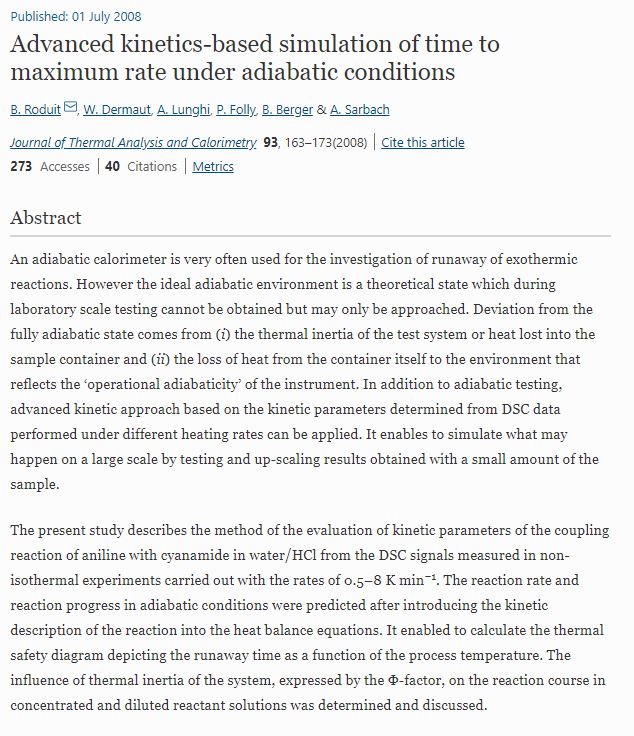B. Roduit1, W. Dermaut2, A. Lunghi3, P. Folly4, B. Berger4, A. Sarbach4
+ More information
1AKTS AG Advanced Kinetics and Technology Solutions, https://www.akts.com, TECHNOArk 3, 3960 Siders, Switzerland
2Janssen Pharmaceutica NV, http://www.jnj.com, 2340 Beerse, Belgium
3Stazione Sperimentale per i Combustibili, http://www.ssc.it/, 20097 San Donato Milanese, Italy
4armasuisse, Science and Technology, http://www.armasuisse.ch, 3602 Thun, Switzerland
Abstract
An adiabatic calorimeter is very often used for the investigation of runaway of exothermic reactions. However the ideal adiabatic environment is a theoretical state which during laboratory scale testing cannot be obtained but may only be approached. Deviation from the fully adiabatic state comes from (i) the thermal inertia of the test system or heat lost into the sample container and (ii) the loss of heat from the container itself to the environment that reflects the ‘operational adiabaticity’ of the instrument. In addition to adiabatic testing, advanced kinetic approach based on the kinetic parameters determined from DSC data performed under different heating rates can be applied. It enables to simulate what may happen on a large scale by testing and up-scaling results obtained with a small amount of the sample.
The present study describes the method of the evaluation of kinetic parameters of the coupling reaction of aniline with cyanamide in water/HCl from the DSC signals measured in non-isothermal experiments carried out with the rates of 0.5–8 K min−1. The reaction rate and reaction progress in adiabatic conditions were predicted after introducing the kinetic description of the reaction into the heat balance equations. It enabled to calculate the thermal safety diagram depicting the runaway time as a function of the process temperature. The influence of thermal inertia of the system, expressed by the Φ-factor, on the reaction course in concentrated and diluted reactant solutions was determined and discussed.

